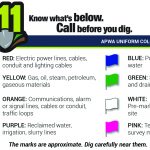
Managing Safety on a Multi-Employer Job Site
Construction job sites are often chaotic and confusing with multiple trades and employers working at the same time. It’s very common for general contractors and trade subcontractors, such as electricians, iron workers, masons, and carpenters to all be working on various aspects of a project simultaneously, creating a higher likelihood for accidents to happen. Should an accident happen, who would be responsible for any associated citations?
Knowing OSHA’s Multi-Employer Citation Policy is Mission Critical
Understanding your obligations under OSHA’s Multi-Employer Citation Policy and taking reasonable care to prevent and detect hazards on-site is a crucial aspect of safely managing a multi-employer job site. It will also help all contractors prepare for a possible OSHA inspection.
According to OSHA, under the Multi-Employer Citation Policy, CPL 02-00-124
(Multi-Employer Policy), “more than one employer may be citable for a hazardous condition that violates an OSHA standard.”
Two-Step Process for Citing an Employer
OSHA uses a two-part evaluation process to determine whether more than one employer is responsible and therefore may be cited for a workplace hazard. This process first categorizes the employers into four categories, and then determines whether ALL employers have met their obligations.
This two-step process is used to determine the following:
- The role of the employer (i.e. whether the employer is a “creating, exposing, correcting, or controlling” employer)
- Whether the employer met their obligations with respect to OSHA requirements (the extent of an employer’s obligations vary depending on their role as a creating, exposing, correcting, or controlling employer).
OSHA Defines Four Types of Employers
The OSHA Multi-Employer Citation policy requires determining the type of employer on a site.
In its policy, OSHA outlines four types of employers: creating, exposing, correcting, and controlling.
OSHA defines those employers as:
- CREATING – The Creating employer is the one who caused a hazardous condition that violates an OSHA standard. A creating employer can also be cited in instances where none of its employees are exposed to a hazard, but employees of other organizations are exposed.
- EXPOSING – The Exposing employer is one whose employees are exposed to a hazard. An exposing employee may not have created the original hazard, but they are allowing their employees onsite to be exposed to it.
- CORRECTING – The Correcting employer is often engaged in a common undertaking, on the same worksite as an exposing employer, however they are the one(s) responsible for correcting a hazard. For example, an employer who’s tasked with installing, erecting, or maintaining fall protection measures, such as guardrails.
- CONTROLLING – The Controlling employer has general supervisory authority over the entire worksite and can only be cited for OSHA violations as a controlling employer if it has failed to exercise reasonable care to meet its OSHA responsibilities. This may include the power to correct safety and health issues or to get other employer(s) to fix those issues.
It’s important to note that an employer can be more than one
type according to OSHA guidelines.
For example, a creating, correcting or controlling employer can sometimes also be an exposing employer. Also, an exposing, creating or controlling employer can be a correcting employer if they’re authorized to correct a hazard.
Employers Must Practice “Reasonable Care”
The OSHA Multi-Employer Citation policy also includes guidance on practicing “reasonable care” and emphasizes the use of “good faith efforts.” OSHA’s policy gives a list of factors for exercising reasonable care and how to evaluate reasonable care for all employers.
Reasonable care generally means that overall safety and health compliance has been implemented on the job site and can be demonstrated through a system or plan. This includes regular safety inspections, written documentation to show that reasonable efforts have been taken, and communication efforts to employees have been made.
Should OSHA show up on your job site, demonstrable documentation and communications efforts are valuable in proving that reasonable care was practiced, and good faith efforts were implemented to provide safety and avoid accidents. Having concrete proof of consistent and ongoing safety efforts is very important in the inspection process.
Implement Best Practices Across Your Entire Organization
One of the best practices for any general contractor is to carefully consider the subcontractors with whom they do business. This should include looking at relevant industry data, as well as key metrics such as the number of near misses, safety observations, inspections/audits, and/or corrective actions taken.
Additional best practices should include conducting pre-bid and pre-construction meetings to discuss safety issues and policies, emphasizing the importance of safety at job meetings, and requiring contractors to conduct inspections and safety meetings.
Safety committees are also a good way to make sure all parties understand the project scope and safety requirements needed. Safety committees are not required by OSHA, but there are huge benefits to implementing one. Safety committees are a great way to promote a “culture of safety” across the organization as well as on specific job sites.
Make Sure Your Job Site is Multi-Employer Safe -Get started now!
Compliance Consultants, Inc. has many clients who fall into the multi-employer category and we have the expertise to assist you with the many aspects of this important OSHA policy.
Contact us today for a consultation on your job site.
Resources:



